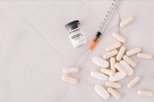In recent years there has been an increase in widespread drug use and addiction—one of the most negative elements in our society. According to recent posts on the website of the National Institute on Drug Abuse (NIDA), some of the surprising statistics (from 2009-2011) on drug abuse in the United States include:
- 23.5 million Americans aged 12 or older needed treatment for an illicit drug or alcohol abuse problem
- Only 2.6 million—11.2 percent of those who needed treatment—received it at addiction treatment facilities
- 41.4 percent of treatment facility admissions involved alcohol abuse
- 20 percent of treatment admissions involved abuse of heroin and other opiate drugs
- 17 percent of treatment admissions involved abuse of marijuana
- 60 percent of admissions were White people
- 21 percent of admissions were African-American people
- 14 percent were Hispanic or Latino people
- 2.3 were American Indian or Alaska Native people
- 1 percent were Asian/Pacific Islander people
Supply and Demand: Increased Drug Use and Related Problems
Due to the widespread use of drugs such as cocaine, "angel dust," marijuana, LSD, heroin and numerous other substances, the demand for illicit drugs has increased. Unfortunately, there are ready drug suppliers who have responded to this increased demand. The importation of illicit drugs in the United-States runs a close second to the importation of petroleum.
The NIDA reports that drug abuse has a negative economic impact on our society, costing us approximately $67 billion per year. This figure includes costs related to drug crime, social welfare programs, medical costs related to drug abuse, and time lost from work. NIDA also states that getting treatment for drug addiction could reduce these costs.
Yet more startling statistics related to drug abuse in the U.S. (from 2003) come from the Centers for Disease Control and Prevention (CDC). The CDC reports that:
- More than 25,000 people died in 2003 from drug-induced effects
- The 123,235 adults living with AIDS in the U.S. in 2003 contracted the disease from injection drug use
- The survival rate for those persons is less than that for persons who contracted AIDS from other modes of transmission
- 47 percent of women diagnosed with AIDS are injection drug users
- 19 percent of women diagnosed with AIDS report having sex with injection drug users
The Hazelden Foundation reports that alcohol and drugs account for 52 percent of all traffic fatalities. In a study conducted in British Columbia, nearly 50 percent of drivers involved in motor vehicle crashes, tested positive for marijuana. Marijuana use increases the risk of a motor vehicle accident by at least 2-4 times.
The Correlation between Drugs and Crime
It has been found that drugs and crime are interrelated, as demonstrated by research studies conducted by the National Institute of Justice (NIJ), a research branch of the U.S. Department of Justice. The NIJ has found that drug addicts have a stronger tendency to commit crimes. Addicts need money to finance their drug habits. In their desperation to get a drug “fix,” they may commit petty crimes. Often, smaller crimes can lead to bigger ones.
Prevention of Drug Use and Drug Addiction: Is it Possible?
In 2007, a study in the U.K. found that government-backed education and prevention programs designed to steer youngsters away from drugs appeared to have had very little impact. The rate of experimentation with illicit substances among school-aged children and teens continued at roughly the same rate. In fact, recent surveys in the U.K show that teens in Great Britain appear to be the heaviest drinkers and drug users in Europe.
This information about drug use in our society—and especially among our youth—is discouraging, but should not deter community services and anti-drug agencies from continuing their efforts to reach the younger demographic with information and programs that teach them about the perils of drinking and drug use.
If you or someone you know is seeking help from addiction, please visit our directory of treatment centers or call 800-772-8219 to start the path to recovery today.








